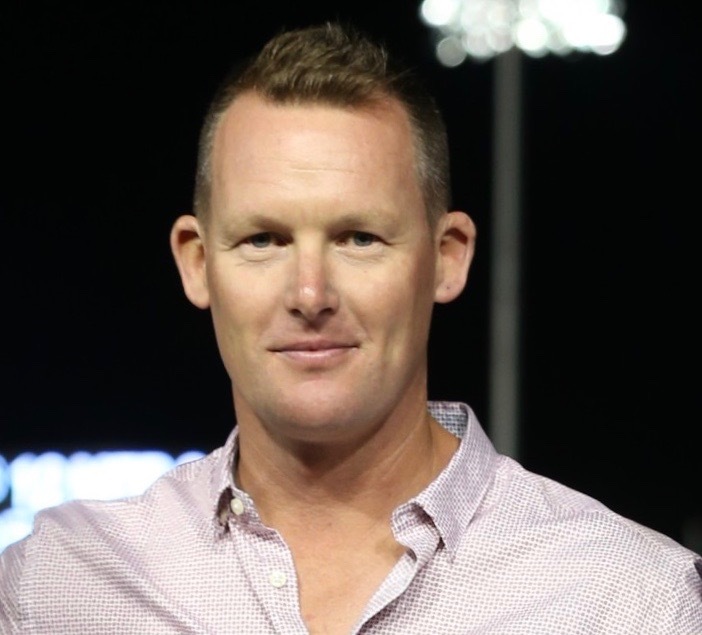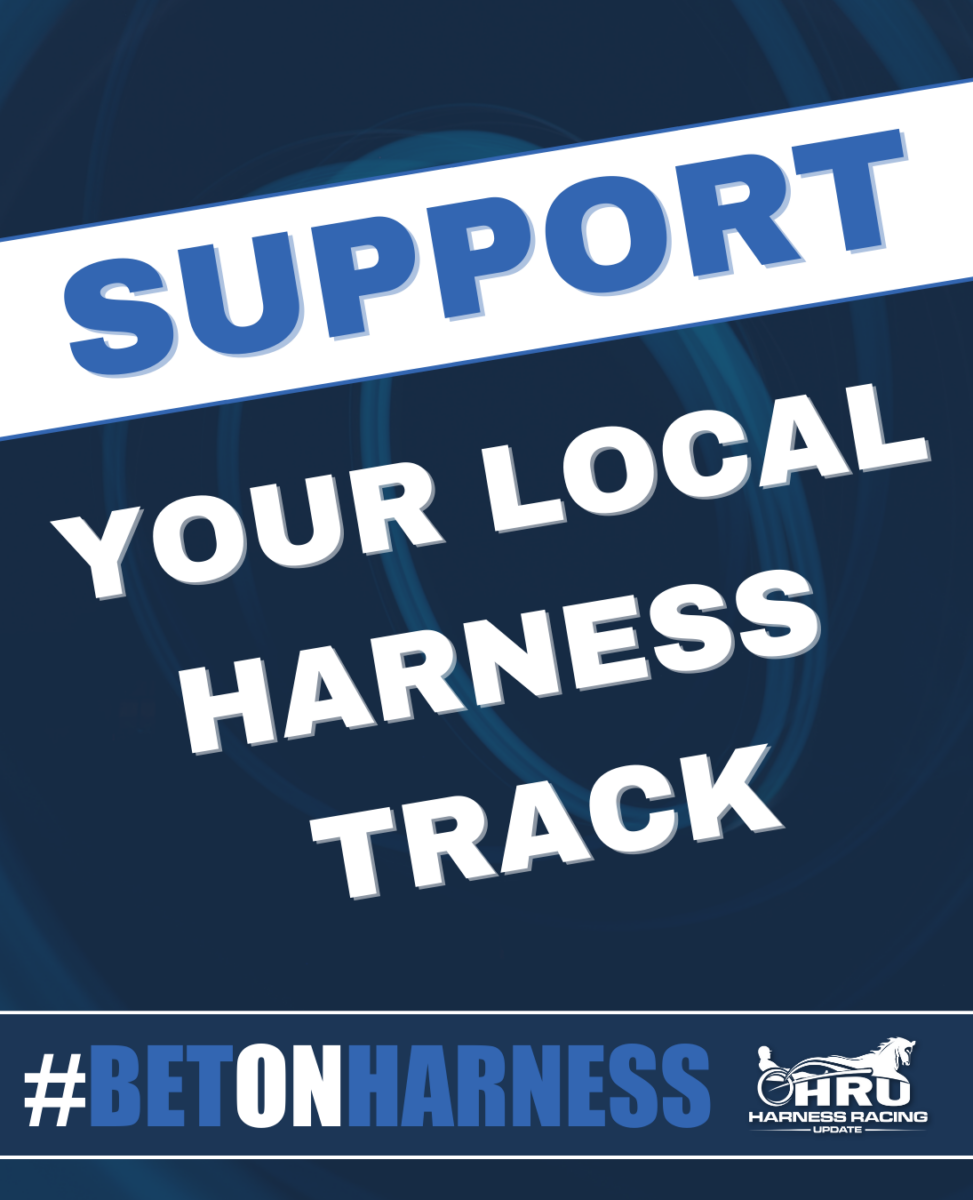Mohawk race secretary O’Sullivan on the challenges of filling cards
by Melissa Keith
This week, Woodbine Mohawk Park added Tuesdays to the racing schedule. That makes for five cards a week at Canada’s biggest track, and more work for relatively-new race secretary Tony O’Sullivan.
“I actually finished training the first of October,” he said. “I started here December 1st.”
O’Sullivan is a familiar name already, as a trainer with 1,190 career victories from 4,220 North American starts and
$30.2 million (Cdn) in purses won. Now retired from that side of the sport, he said the experience remains valuable in his current role at Mohawk Park.
“I think having that background definitely helps, just knowing the caliber of horses and things like that from racing pretty much every class over the last 20 or 25 years. But, yes, it’s a steep learning curve. It’s not an easy job and like most things, it has its challenges, so there’s a lot to learn.”
The New Zealand native gained knowledge on classifying horses first-hand, decades before succeeding long-time race secretary Scott McKelvie, who retired March 31.
“I went to New Jersey in 1996, and worked for Paul Jessop and then Ross Croghan. I came up here, and worked for Nat Varty and ran Mark Harder’s Canadian operation for a few years. Then at the end of 2004, I opened up my own stable,” he said. “I had kind of had enough of training and wanted to move on to something else, and when this became available, it was a position that I can certainly take a hold of.”
Contemporary race secretaries must deal with a troubling trend.
“I think what makes it most challenging is the shortage of horses and the declining population,” said O’Sullivan. “We have a lot of racetracks here in Ontario and we race at the same time as each other, and it does make it hard for everybody, even on the training side, to know where to go. Obviously, higher-end horses in any jurisdiction, they’re the ones that are tougher to come by. So it’s usually the lower-end horses [available to race], and it’s hard to appeal to them and find the right spot for them, even if on paper it looks like it’s the right spot.”
He added that “a lot of factors” have depleted racing stock.
“I think the breeding numbers have gone down everywhere over the last few years. Obviously, in Ontario, we took a big hit in 2013 after the Slots [at Racetracks] Program got canceled. I think it took a lot of breeders a while to get their confidence back and get their money back, and to get confidence in the [current] program. Then there’s the natural attrition of people getting older and not being able to continue taking care of horses; trainers cutting down for the same reason: that they’re a little bit older and having staffing issues. So it’s kind of a snowball effect, and then you throw COVID on top of it – it’s a perfect storm.”
There’s another reason it’s been tough to fill some classes lately: speed.
“When you’re dealing with a horse supply problem, people probably raise it more than they usually would, because race offices are asking for horses, and the horsemen want to help out and we certainly need them… They’re just going so fast – most of the horses are going as fast as they possibly can – and racing all the time probably isn’t ideal for most of them.”
Mohawk’s recent Pop-Up Series incentivised entering horses who might otherwise spend time at smaller tracks.
“Early on and through the winter, it probably kept us going in some ways,” said O’Sullivan. “It probably helped us with four, five or six races a week. What it really did, and what it was aimed at, was the lesser-quality or lesser-earning horses being able to come here and race for money. Some of them certainly made more than they would have [racing elsewhere], and a lot of them made more than they did last year, so it did work. We have another couple [Pop-Up Series races] going on at the moment that are getting us fresh faces here – not as many; obviously with the big track in the summer, the speed that they go is the issue. It probably frightens people away, but I think overall they’ve been a success. I think the gamblers like them and there’s certainly been horses make good money in them.”
The Ontario Sires Stakes and Prospect Series are bringing young horses back to the track, plus the Grand Circuit has multiple stops in Campbellville over the coming months. This eases the burden (slightly) for the race secretary.
“When you know that you can count on potentially ‘x’ amount of races for a race card, it certainly helps. It means that instead of coming up with 10 or 11 races, you may have to come up with 7.”
Recent cancellations of Miss Versatility and Graduate Series legs for trotting mares were evidence of industry-wide issues, explained O’Sullivan. (Both series are administered by The Meadowlands.)
“I think the Miss Versatility, we had three entries for it, and the Graduate mares, we had four. I know for the Graduate, there were one or two that went to the program in Kentucky [Oak Grove’s Four-Year-Old Kentucky-Bred Series]. When you’re dealing with kind of a small pool group there, it only takes one or two people to go in another direction, or somebody to get hurt, to deplete the race.”
It’s no coincidence both races were for elite trotting mares.
“They’re worth more money, probably, than they can race for, and you also eliminate the risk of something going wrong” when they are sold overseas or bred instead of competing.
Major events aside, there remains the matter of five cards a week. Monday morning (June 6), the race office announced it was “extremely short in all classes Thursday.” Later that day, 83 of 99 horses entered had drawn in for 10 races. O’Sullivan shared more about what it currently takes to write and fill classes at Mohawk Park, to be continued in the next column.
Notes: Tuesday qualifiers were canceled (weather). This morning’s (June 10) qualifiers include the first baby races of the season. North America Cup eliminations are Saturday, June 11; tickets are on sale for the June 18 final, on-track during race nights and at Guest Services, beside the main entrance ($10 general admission; free for youth 17 and under).

















